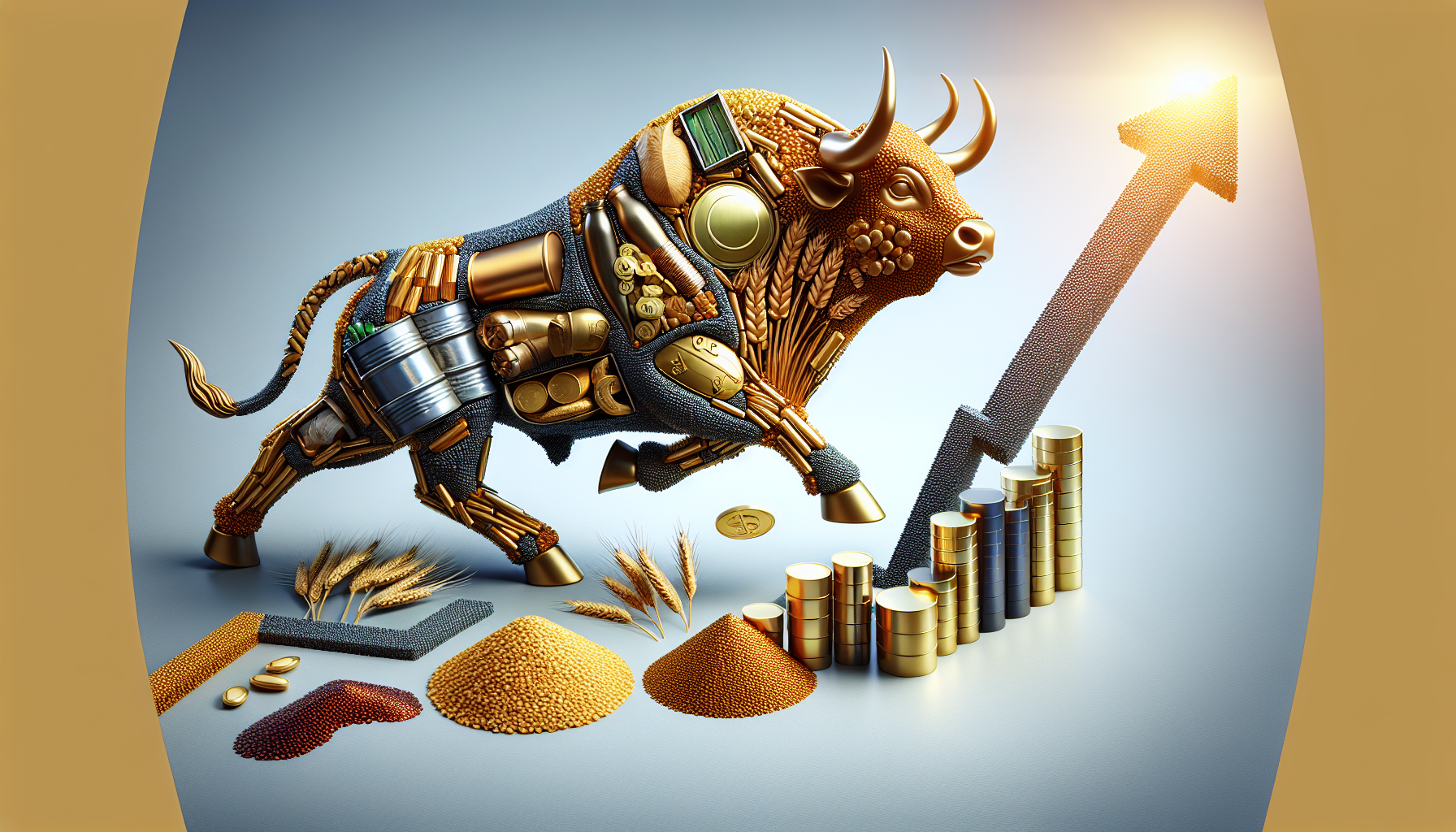
Performance of commodities and growth in indices
New studies indicate that the commodities market has significantly surpassed various other asset classes in performance this year, with the Bloomberg Commodities Index rising 12.2 percent over the last 12 months. This index measures the overall return from 24 leading futures markets across energy, metals, and agricultural goods, providing a comprehensive view of the sector’s trends.
Energy commodities have emerged as key contributors, supported by tighter global supply chains and geopolitical issues that have pushed crude oil and natural gas prices higher. Industrial metals like copper and aluminium have also experienced strong demand, especially due to infrastructure and renewable energy initiatives, further contributing to the growth.
Within the agricultural sector, climatic disruptions and international supply limitations have driven up prices for essential crops such as wheat, corn, and soybeans, enhancing the sector’s overall resilience. This widespread growth across various commodity sectors has positioned the index as a strong performer and a compelling option for Australian investors aiming to diversify beyond stocks and fixed income.
The 12.2 percent increase in the Bloomberg Commodities Index captures not just rising spot prices but also the beneficial roll yield from futures contracts, which bolsters the total return. For portfolio managers and institutional investors, this performance highlights the strategic importance of commodities as a safeguard against inflation and market fluctuations.
Primary influences on sector performance
A mix of macroeconomic and geopolitical elements has driven the strong performance of the commodities market. A significant factor has been the ongoing inflationary climate, both globally and in Australia. With central banks, including the Reserve Bank of Australia, continuing to implement stricter monetary policies to stabilize inflation expectations, real assets like commodities have gained traction as inflation protections. This has resulted in increased institutional investment in commodity-related instruments, supporting price growth.
On the supply side, interruptions have been crucial. The ongoing Russia-Ukraine conflict is still hampering the flow of essential energy and agricultural exports, notably natural gas and wheat. Moreover, OPEC+ production reductions have constrained oil supply, elevating Brent crude and WTI prices. For Australian investors, this has led to enhanced performance in energy-focused commodity ETFs and futures contracts.
Industrial metals have also experienced a demand surge, primarily fueled by the global shift towards renewable energy. Countries are increasing investments in infrastructure for renewable energy, electric vehicles, and battery storage—all of which rely heavily on metals such as lithium, nickel, and copper. Australia, as a key exporter of these vital minerals, has benefitted from heightened global demand, improving trade balances and lifting mining sector stocks.
Climatic irregularities, including extended droughts in North America and excessive rain in parts of Asia, have limited crop yields and disrupted agricultural supply chains. This has resulted in rising prices for grains and oilseeds. Australian agribusinesses have seen more export opportunities, particularly in wheat and barley, further bolstering local commodity-linked assets.
“We’re witnessing a unique convergence of structural and cyclical factors driving up commodity prices,” remarked a portfolio strategist based in Sydney. “From inflation hedging to realignment of supply chains, the macroeconomic backdrop is incredibly supportive.”
Currency fluctuations have also influenced the scenario. With the Australian dollar fluctuating against the US dollar, local commodity exporters have benefitted from positive exchange rate impacts, boosting revenues in AUD terms. This has provided an additional boost for domestic commodity producers and investors in the sector.
- Inflation and tightening of monetary policy have increased demand for real assets
- Geopolitical challenges and supply interruptions have limited availability
- Energy transition initiatives are fostering sustained demand for industrial metals
- Unfavorable weather conditions are raising agricultural prices
- Favorable AUD/USD fluctuations are improving export competitiveness
These interconnected factors suggest that the commodities rally is not just a temporary spike but indicative of deeper structural changes in the global economy. For Australian financial managers and institutional investors, these dynamics present both opportunities and a strong rationale for strategic investment in the commodities arena.

